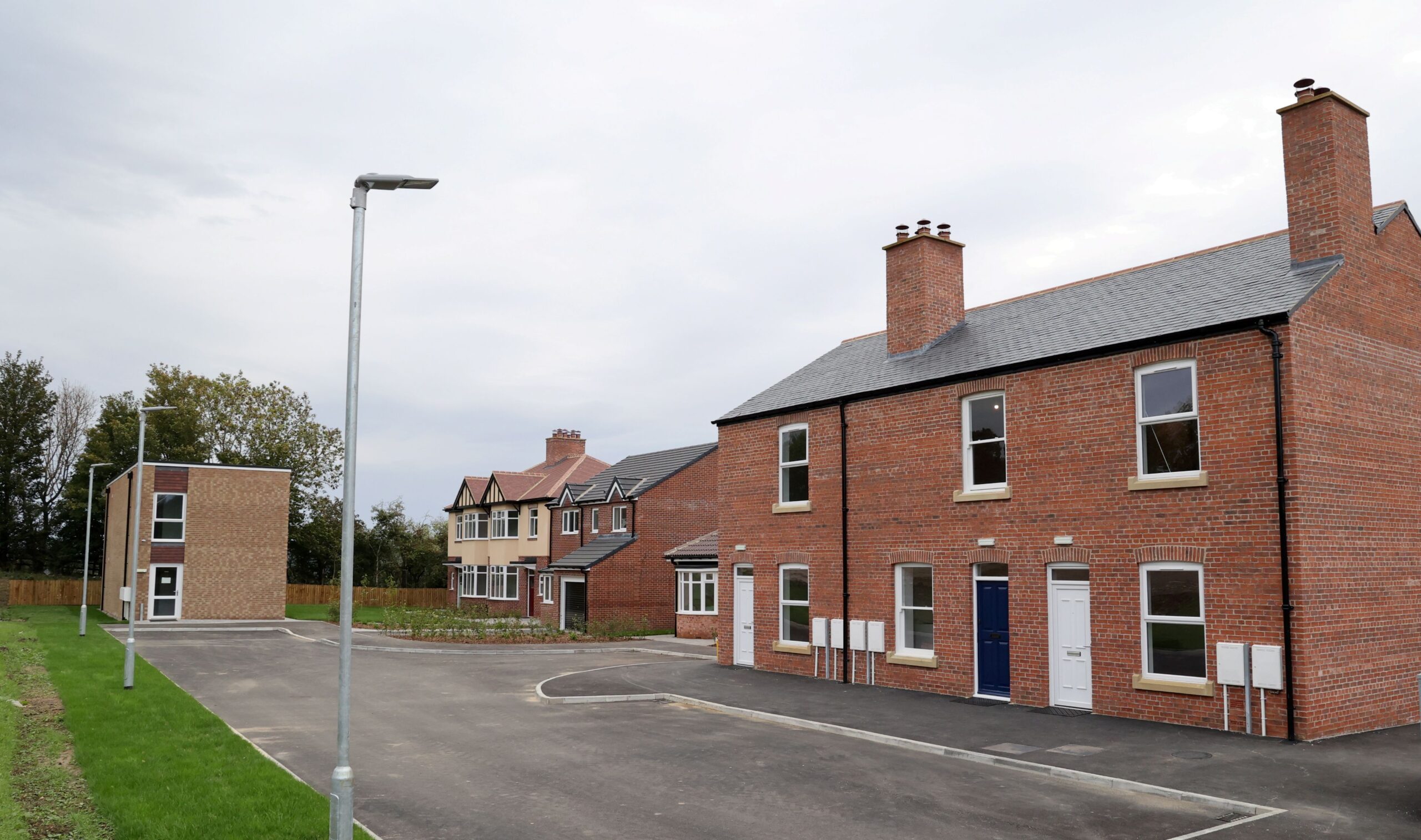The organisation is launching two test cells in a bid to develop more reliable ways of measuring the thermal performance of structures.
Part of Leeds Beckett University, Leeds Sustainability Institute is undertaking the work ahead of the introduction of Britain’s new Future Homes Standard. Coming into effect this year, the rules mean developers must now test and verify a building’s ability to retain warmth, among other things.
Establishing an agreed baseline will enable more reliable testing methods of measurement, giving builders, landlords, tenants and homebuyers more reassurance that a property meets modern energy efficiency standards. As part of this work, LSI has been extensively testing structures at the Net Zero Research Village [NeRV], Gateshead – where retrofit, insulation and low energy technologies are trialled (pictured above).
Nine home types have been assessed through this process. These include 1910s terraces, 1930s semi-detached homes, 1970s flats, and 1990s detached homes. A baseline will be identified for each, which will greatly improve the ability to determine the effectiveness of solutions.
‘We’re partnering with developer Citu to establish these two test cell sites in Leeds to help define a pathway for housebuilders to integrate measurements into their everyday construction processes and meet upcoming net zero regulations,’ said Professor David Glew, Director of the Leeds Sustainability Institute at Leeds Beckett University.
‘The coming shift in focus within the building regulations towards measured data is a step change for the industry, and we are doing this research to improve and validate the tools industry needs to ensure they will comply with the requirements,’ he continued.
According to David Lynch, Energy Transition Strategy Manager at NeRV, the UK needs to decarbonise 20,000 properties per week between now and 2050 to meet net zero targets. This challenge will be easier to overcome with the ability to make better informed decisions on best practices.
‘The testing LSI have carried out at NeRV will give us granular insights into the baseline energy performance for each property type, ultimately helping us understand what impact low carbon retrofit technologies have had upon each dwelling,’ he said. ‘All of this takes us closer to delivering the data on domestic decarbonisation, and providing the evidence customers need to make informed decisions depending on the type of home they live in.’
Image: NeRV
More on net zero:


















